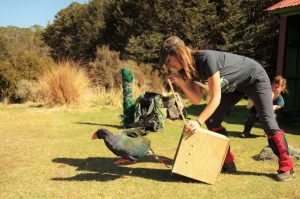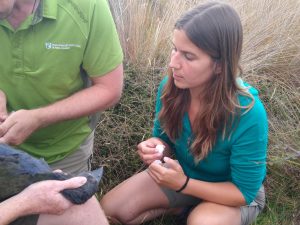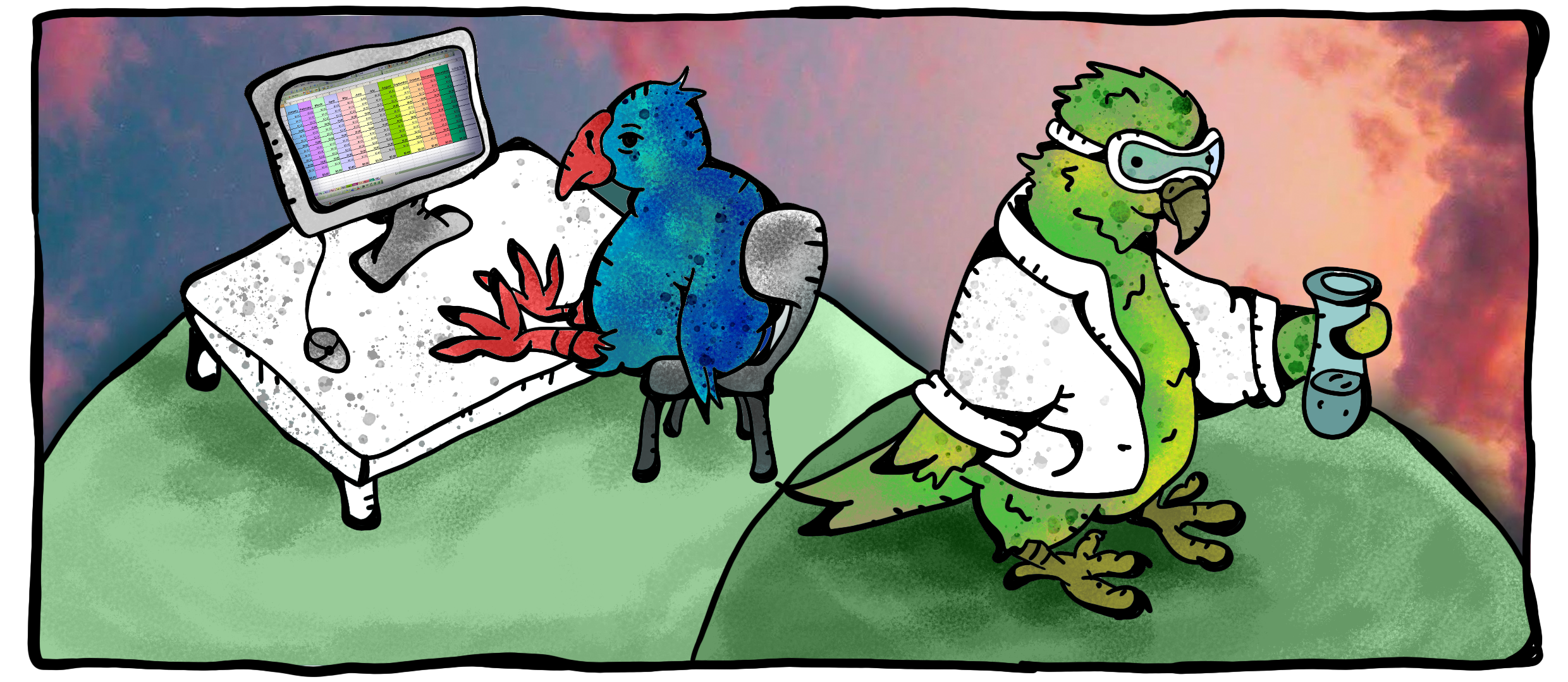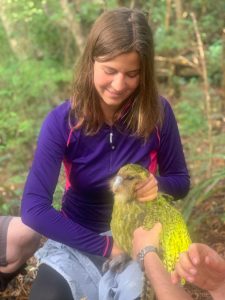Growing up in Bavaria, Germany, Lara Urban loved being out getting dirty while spending time in nature—and she also had a thing for all sorts of off-beat animals.
“And sharks,” she recalls, laughing. “I especially liked sharks.”
So it’s little wonder that, as an adult, Lara’s now “having an amazing time in New Zealand” working with two of the world’s most endangered species, the kākāpō and the takahē. (True, they’re a bit cuter than sharks, but still … )
What is surprising, though, is the academic route that Lara’s taken to become a post-doctoral researcher (and Humboldt Research Fellow) at the University of Otago.
As a self-professed “nature child”, always wanting “to do something for nature conservation”, it was obvious she’d take ecology at university. She then jumped at the chance to travel the world studying exotic wildlife.
Then Lara made an abrupt-seeming career change—a PhD on the genetics of human cancer at the European Bioinformatics Institute and the University of Cambridge.
Yet for Lara, it all made perfect sense. Her conservation field experience had made her aware of the huge potential of genetic and genomic technology, and the mass of useful information made available by these modern techniques.
“I realised I had to become really good at analysing these sorts of data,” she explains.
To get more proficient in bioinformatics and analysing complex biological information, she therefore searched for “the most statistical PhD position” she could find. Working on the molecular biology of cancer ticked this box perfectly, she says. And this, in turn, eventually gave her the opportunity to bring together “the molecular experience in the lab” with her original love of nature and conservation.
 “I’m definitely more of a biologist than a statistician,” she says, “and I wanted to combine them both. It’s super-exciting, taking things used in one field to a different one.”
“I’m definitely more of a biologist than a statistician,” she says, “and I wanted to combine them both. It’s super-exciting, taking things used in one field to a different one.”
And Otago seemed an ideal place to begin her post-doctoral research.
“New Zealand researchers are pioneers in using genomic techniques in the conservation of endangered species and ecosystems,” Lara says.
Now she’s applying the same models and methods she used to study human health to help save two of this country’s iconic endangered birds—for instance, by looking at “the genetic pathways of disease susceptibility” in kākāpō or “the genomic diversity of wild takahē populations” compared to those in sanctuaries.
She’s also really keen to further employ genomic technology for conservation purposes; for example, by using environmental DNA analysis of soil and water samples to monitor species remotely and non-invasively, while “interfering as little as possible” in fragile ecosystems. (At Cambridge, Lara co-founded a real-time DNA sequencing organisation, PuntSeq, that monitors biodiversity in the River Cam.)
Having been at Otago for a year, she’s still enjoying the Kiwi experience and, especially, spending plenty of time in this country’s unique natural environment.
“I find New Zealand’s remote nature exciting, it’s an amazing experience to see what nature is really like,” Lara says. “It’s one of the most amazing places in the world and has come up to all my expectations, including really nice and open people.”
And another major boost is the opportunity to collaborate with a hugely diverse group of ecologists, conservationists and Māori iwi, “the kaitiaki (guardians) of these taonga (treasured) species”.
“It’s the perfect set-up of how science should be conducted,” Lara says.
Written by Mick Whittle
Images provided by Lara Urban, thanks to the Takahē and Kākāpō Recovery Teams




